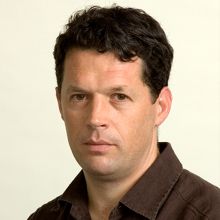
Dr. Sarah Rugheimer is an astrophysicist at Oxford University working detecting possible life on exoplanets by looking for atmospheric biosignatures. Her research interests are modeling the atmosphere and climate of extrasolar planets, focusing on atmospheric biosignatures in Earth-like planets and modeling early Earth conditions. In 2020 she was selected as a TED Fellow and previously was awarded the Barrie Jones Award and the BSA Rosalind Franklin Lectureship in 2019, and the Caroline Herschel Lectureship Prize in 2018. Her new astrobiology course for the public is available on Amazon Audible Originals, called “Searching for Extraterrestrial Life.”

Toby Tyrrell is a Professor of Earth System Science in the School of Ocean and Earth Science at the University of Southampton in the UK. After degrees in engineering, artificial intelligence and computer modeling, in the last 25 years he has created more than ten original computer models in different fields, ranging from neuroscience to plankton ecology to the physics of light in seawater to planetary habitability. In his 2013 book (“On Gaia: a Critical Investigation of the Relationship between Life and Earth,” Princeton University Press), he concluded that the Gaia hypothesis is not supported by current evidence and is therefore not a credible explanation for how Earth stayed habitable. He recently used a simple model to simulate the climate histories of 100,000 planets, each with randomly different climate feedbacks, to assess the roles of destiny and chance in habitability outcomes.
